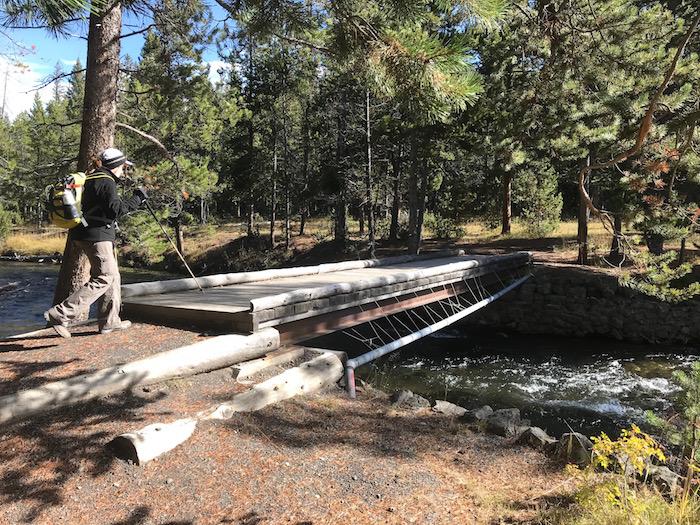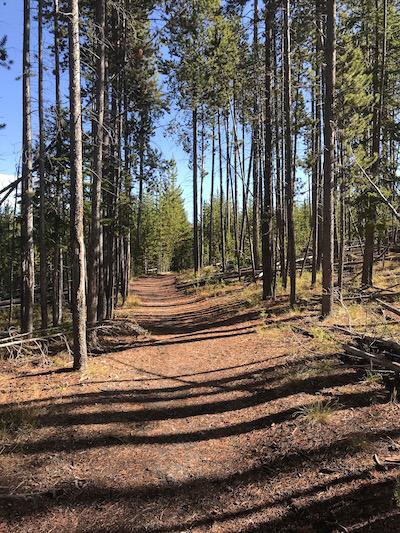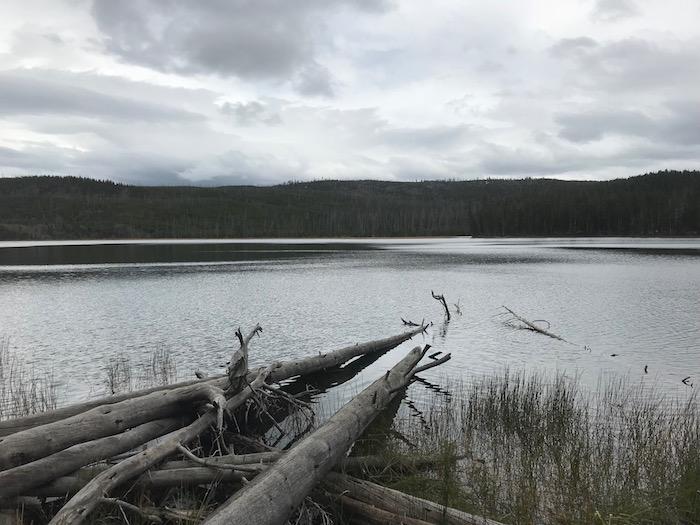
Your hike to Mallard Lake starts with a footbridge that takes you across the Firehole River/Kurt Repanshek
Though I've been visiting Yellowstone National Park for a few decades and hiked many of the park's trails, in truth I've only scratched the surface of the backcountry paths that wind through this incredible landscape. So on my latest trip I packed four guidebooks and three maps with plans to discover a new one. And the one I did was practically out the door of my cabin.
How I had overlooked the trail to Mallard Lake all these years is a bit of a mystery. No doubt, the fact that it leaves the Upper Geyser Basin, a fascinating place that draws Yellowstone visitors back again and again and again and holds them there, had something to do with it. But with the trailhead near Old Faithful Lodge and the destination a shimmering backcountry of roughly 30 acres, I should have hiked it long ago.

Early on, the trail carries you through a lodgepole forest/Kurt Repanshek
The trail can either be tackled as an out-and-back, 7-mile hike, or made into a longer, 11-mile loop by continuing from the lake down the Mallard Creek Trail, which heads 4.2 miles to the northwest and ties into the Powerline Trail. The Powerline Trail then heads back south about 4 more miles to the Old Faithful Inn. For those just getting into backpacking, or who are short on time, there are three backcountry campsites on the shore of Mallard Lake that can be reserved and offer a quick and easy overnight jaunt. Site OB3 offers the most solitude, as it's at the end of a trail that goes partway around the lake. (Traveler note: No campfires are allowed at these sites.)
The Mallard Lake Trail trailhead is at the southern end of the loops of cabins associated with the Old Faithful Lodge. It quickly takes you across a footbridge spanning the Firehole River. If you leave the trail and follow the river upstream to the right you'll come upon a small collection of hot springs (Pipeline Hot Springs). Back on the main trail, you'll walk through a fairly mature lodgepole pine forest. Soon, however, you'll leave the forest, cross a small creek, and head uphill in a drainage cut through a rhyolite landscape, a signature of Yellowstone's volcanic underpinnings.
While you'll climb about 900 feet in elevation going up to the lake, it's an easy, gradual climb, not a leg- or lung-buster. The trailbed along the way varies from cinders to pine needles and dirt to loose talus rubble. Just before the final, downhill, approach to the lake, you'll come to a junction with the Mallard Creek Trail.
The early fall day we visited the lake it held a few Canada geese and maybe two dozen mergansers or other duck species. While the lake was determined in 1919 to be barren of fish, according to the National Park Service, it later was planted with Eastern brook trout.
If there's a downside to this ramble, it's that you never entirely escape road noise coming from the Old Faithful area.
If You Go:
Trailhead: South end of cabins associated with Old Faithful Lodge
Distance: 7 miles to lake and back, 11 miles following Mallard Creek Trail to Powerline Trail and back to Old Faithful Inn
Difficulty: Easy
Maps: Trails Illustrated Map 302, Old Faithful
Tips: We didn't see any wildlife other than waterfowl, but it's always good to travel with bear spray in Yellowstone's backcountry.

Mallard Lake on an early fall day that dropped some rain and snow along the trail/Kurt Repanshek



Comments
Wish I was There! Here is a link to a map for those that like the visual of a map; http://www.trailguidesyellowstone.com/yellowstone_hikes/mallard_lake_tra...